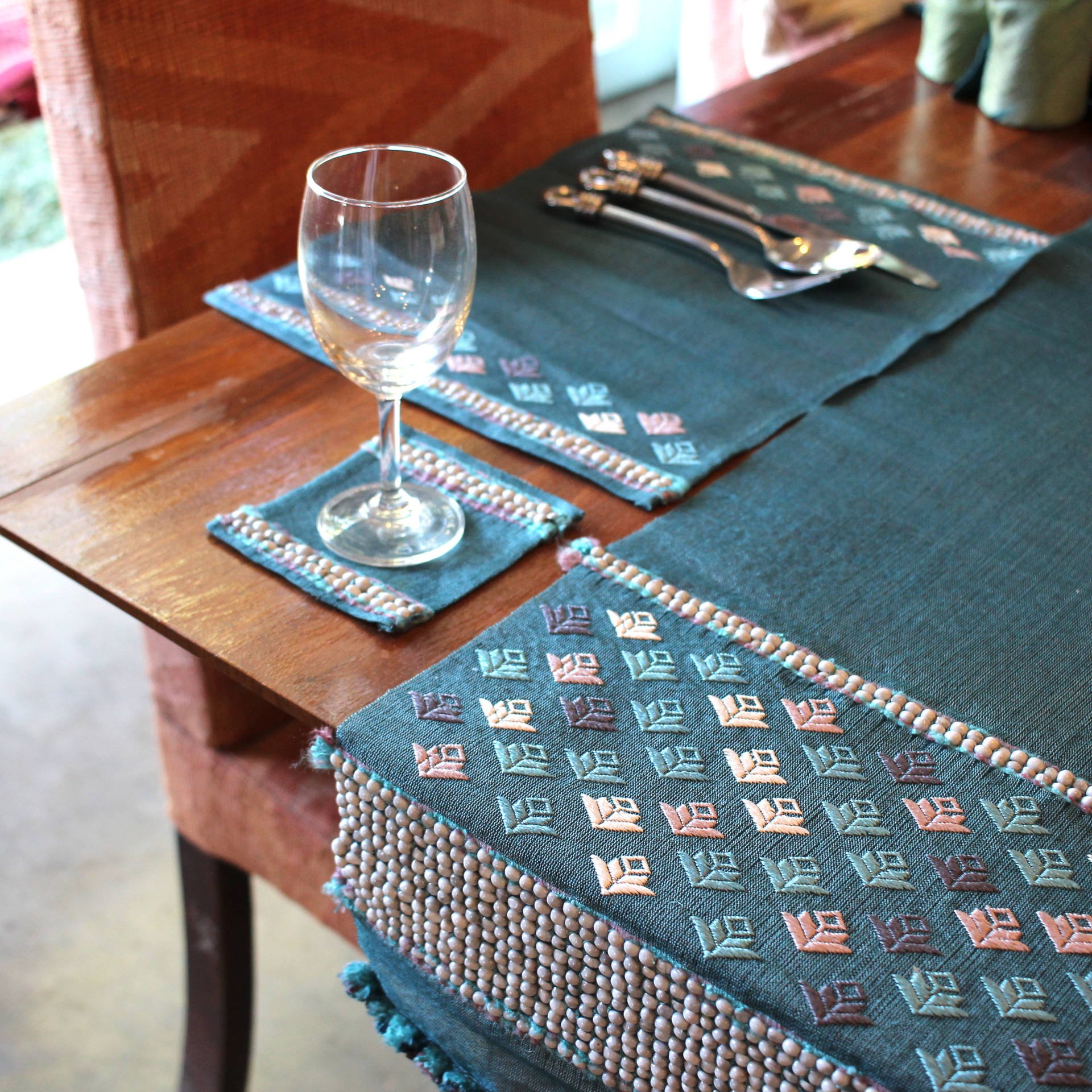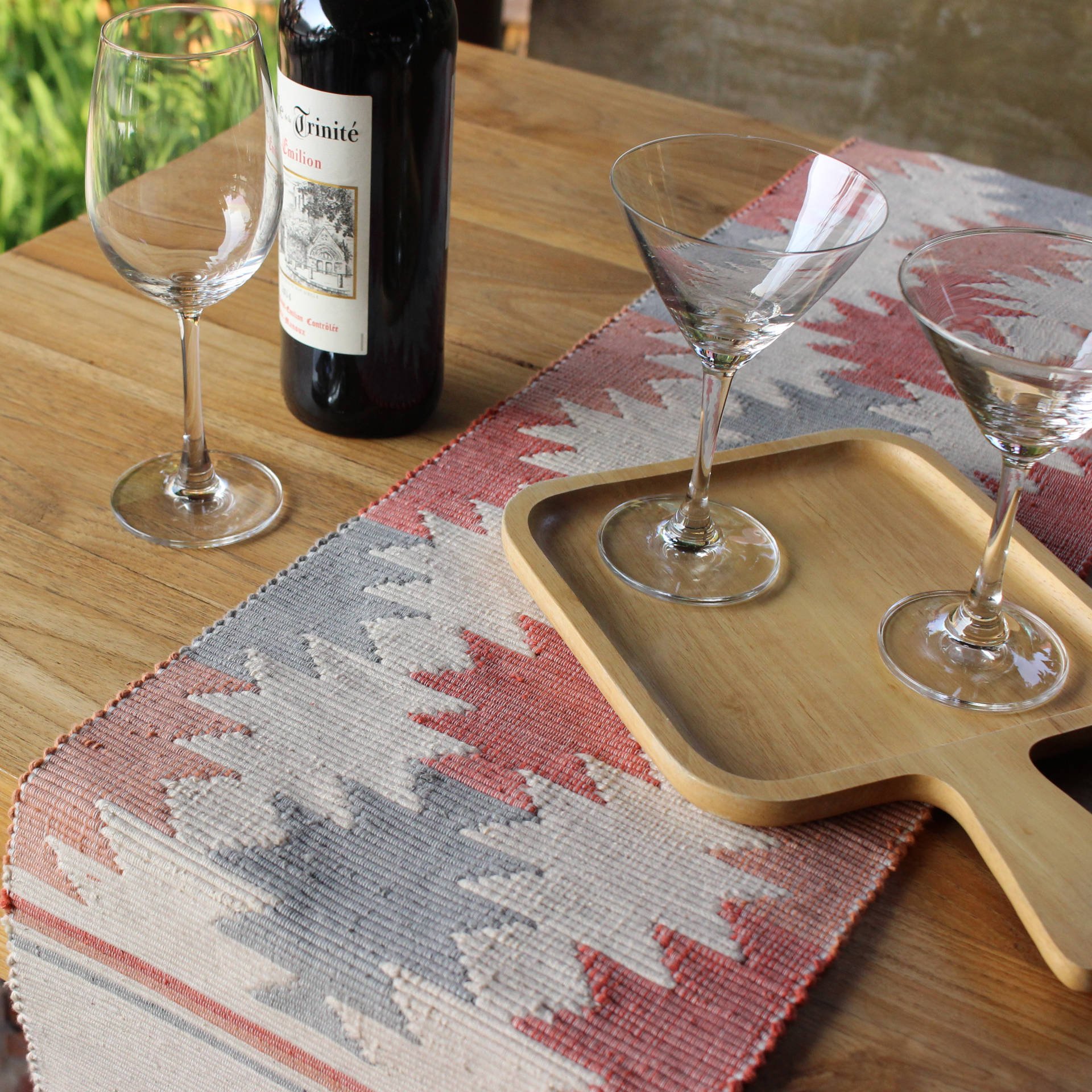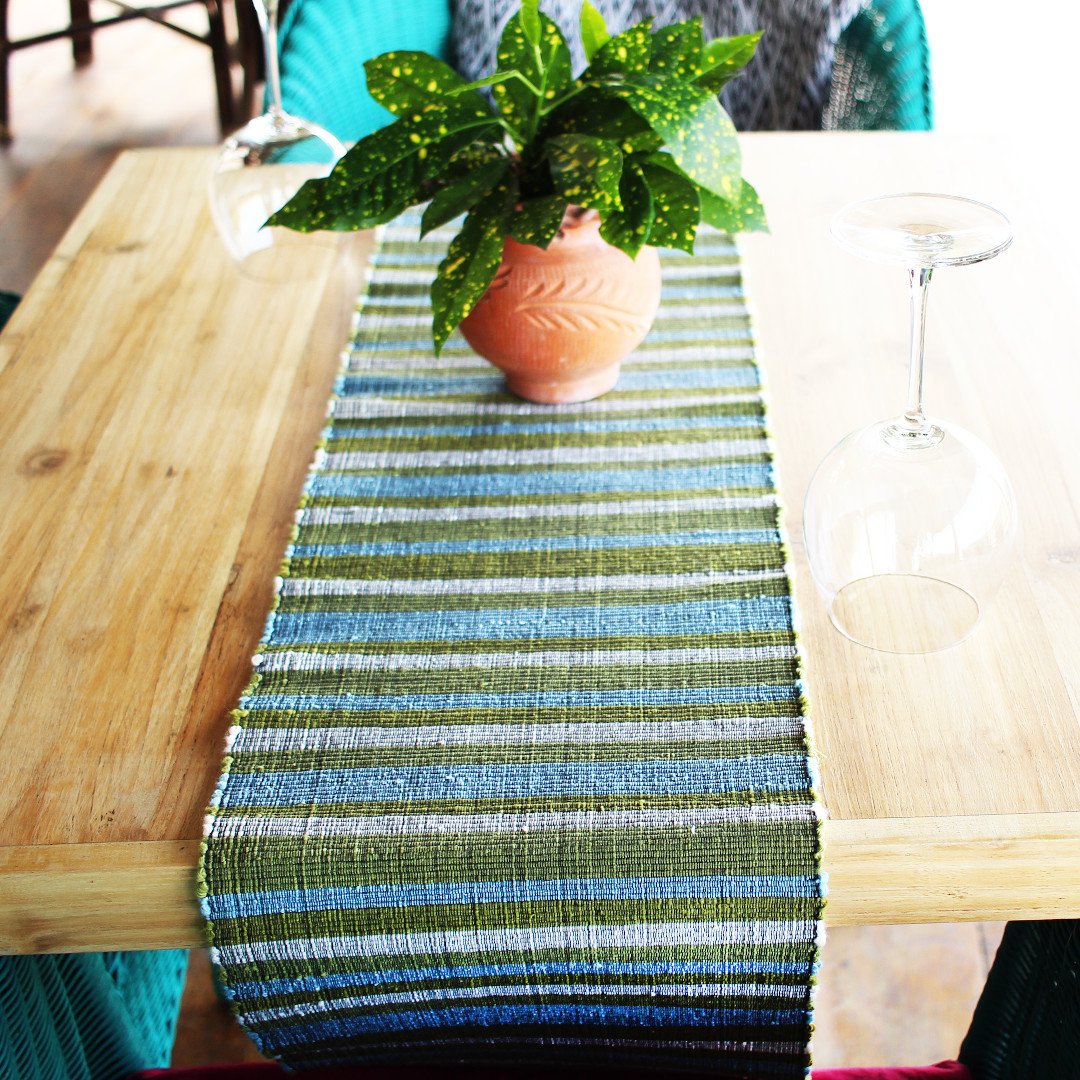Bringing Lao Textile to the World - An Interview with Ock Pop Tok (East Meets West)
Photo: Ock Pop Tok, Tai Lue Placemat
Q: What is Ock Pop Tok?
Founded in 2000 by Englishwoman Joanna (Jo) Smith and Laotian Veomanee (Veo) Douangdala, Ock Pop Tok (East meets West in Lao) is an artisan social enterprise based in Luang Prabang, Laos. Over the years we have grown from a small studio to becoming one of the region’s most important textile and artisanal institutions.
Set in lush tropical gardens and located on the banks of the Mekong, Ock Pop Tok's Living Crafts Center is the perfect place to learn more about the fascinating world of Lao textiles and handicrafts. It was created as a way to allow visitors to observe the impressive skills that go into Lao textiles, the Centre brings the concept of “East Meets West” alive. We offer something for everyone and for all ages.
Photo: Ock Pop Tok
Guests can shop authentic fair trade textiles, create by choosing from our range hands-on artisan classes, eat at our Silk Road Café serving delicious farm-to-table menu, some Lao home recipes as well as a Western menu, inspired by Silk Road cuisines or stay at our Mekong Villa featuring five exquisite rooms with decor inspired by artisan communities in Laos. The Hmong, Katu, Tai Muang, Tai Daeng and Oma room feature textiles handmade by artisans we work with through the Village Weavers Project.
Photo: Ock Pop Tok
Photo: Ock Pop Tok
Q: How is Ock Pop Tok working to preserve traditional textiles?
Since 2003 we have been collecting, preserving and cataloguing Lao textiles. This collection known as the Lao Heritage Textile Collection consists of over 1000 pieces and is housed at our Living Crafts Centre. Here our team of weavers and designers use this collection to reproduce authentic Lao textiles and inspire new designs. We collaborate with villages all over the country to secure improved income through handicraft production. Items from the collection are used as the basis for ideas and design ensuring that authentic and traditional lao textiles continue to be made.
At our Living Crafts Centre in Luang Prabang, we invite visitors to discover Laos through textiles. Through studio visits, hands-on classes and seminars, we educate visitors around the world about Lao crafts to develop a deeper appreciation of both the high level of skill involved and the cultural significance of designs.
Photo: Ock Pop Tok
And of course, on a daily basis, by producing textiles rooted in the textile traditions of Laos and reintroducing traditional techniques in the villages we work with around the country, we make sure that the textile traditions of Laos are not only kept alive but thriving.
Q: What is the future of Lao textiles?
What started with 5 weavers has grown to working with more than 500 artisans throughout Laos. With our growth has come the chance to help support and foster artisans throughout this beautiful country. We believe that culture is dynamic and evolving. Our textiles are based in tradition and heritage with the spirit and energy of a new generation.
Q: How are Lao textiles incorporated into traditional and modern table settings in Laos?
Simple cotton cloths are used to wrap freshly steamed sticky rice and used as handcloths at the communal table. In ceremonies more decorative cloths are used and of course the famous Pa Bieng is always worn when offering food and sticky rice to the monks and novices. Nowadays more popular items have made their way into middle and upper class Lao homes such as table runners, placemats and coasters and of course there has been demand from foreign customers and tourists. In an East meets West fashion, we've used traditional Lao techniques/materials and adapted them to products needed in the west. We mostly use handspun cotton and the tapestry technique showcasing traditional Lao motifs like the crab and the hook. Exceptionally, we'll use silk.
The Dao Tok Organza series (see pictures) was created for the Lao Handicraft Association annual competition. The combination of organza, natural dye and Job’s Tears adornments makes this a classically Lao handicraft. Organza is raw silk, which means it is spun from the cocoon while the fibres are still covered in seracin, a natural film that adds texture, strength and durability. Paired with the matching coaster and placemats, this table runner is perfect for the holiday table, festive meals or even a family dinner!
Organza Closeup
Organza Coaster
Organza Table Runner
Organza Placemat
Organza Jobs Teart Set
Photos: Ock Pop Tok
Photos: Ock Pop Tok, Tapestry Table Runners
Q: How can people support Ock Pop Tok?
The last two years have been very challenging for Ock Pop Tok as for all the artisans we work with. 90% of our revenues pre-Covid came from tourism. Lao borders were closed for 777 days, so... The best way to support Ock Pop Tok is to make a purchase, either online (webshop) or in our brick and mortar shops in Luang Prabang, for those who can. And if they can't - we understand that times are difficult for everyone - talk about us with your family, friends and everyone you know. Word of mouth is powerful! And to the Lao American community, we would like to say, don't hesitate to contact us for your traditional clothing needs or graduation stoles. We would be happy to bring a little piece of Laos to you through textiles.














